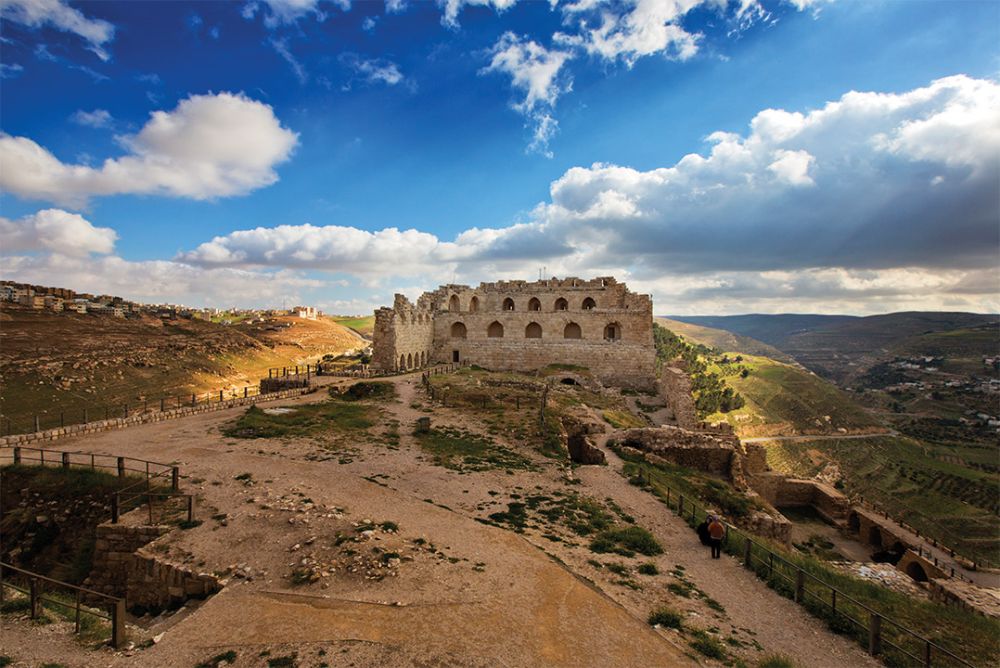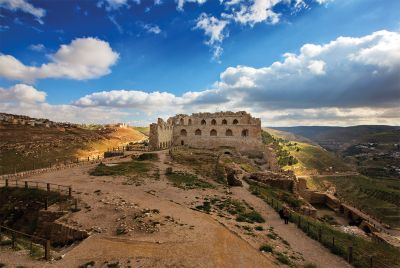

Immerse yourself in the ancient history of Karak with this comprehensive guided tour. The Karak Archaeological Museum, located within the old city walls, offers guests a journey through time as they explore artifacts spanning the different eras of human civilization in the region. From the Stone Age to the Islamic periods, visitors will discover pottery, glassware, and tools that chronicle human settlement in Karak. Expert guides provide detailed commentary on the significance of each exhibit, the historical context of the Karak Castle, and the region's role in the Crusades. This tour is an extraordinary opportunity for history buffs to gain a deeper understanding of how Karak has served as a strategic point throughout centuries.
Participate in a hands-on session at the Karak Archaeological Museum, where tradition meets creativity. This workshop teaches participants the age-old arts of pottery and stone carving, crafts that have been part of Jordan’s cultural heritage for millennia. Under the guidance of seasoned artisans, you will learn the basic techniques of shaping clay and chiseling stone. You'll create your own artifact, a unique souvenir that embodies Karak's rich history. Suitable for all ages, this activity not only provides a tactile understanding of ancient methods but also promotes the preservation of traditional crafting skills. No prior experience is needed, and all materials are provided for an authentic artistic endeavour in the heart of Karak.
Dive into the world of medieval warfare with the Ancient Weapons Exhibit at the Karak Archaeological Museum. Visitors have the opportunity to examine up close the assorted collection of historical arms that once equipped the soldiers of the Crusades and Islamic armies. This exhibit offers detailed explanations of the evolution of weaponry, from simple bow and arrow sets to more complex siege engines. The informative displays give context to each piece, explaining its origin, use, and impact on the outcome of historical battles within the region. Enthusiasts can learn about the craftsmanship behind these weapons and the strategic genius behind their use in some of the most pivotal conflicts in Middle Eastern history.
Explore the architectural wonder of Karak Castle with this focused Medieval Architecture Tour. The tour highlights the engineering innovations and defensive techniques used during the Crusader period. As you walk through the castle's formidable gates and along its walls, the guide will explain the castle's construction, including the use of moats, drawbridges, and arrow slits designed to outsmart besieging armies. The tour also covers the later additions made by the Mamluks and Ottomans, illustrating how the architecture evolved to meet changing needs and technologies. This is an opportunity to appreciate the amalgamation of cultures and designs that give Karak Castle its unique character.
For those fascinated by the history told through currency, the Numismatic Collection Viewing is a must-do activity at the Karak Archaeological All Area. This exhibit showcases an extensive array of ancient coins from different periods, including Greek, Roman, Byzantine, Islamic, and Ottoman currencies that once circulated in the region. The collection provides insights into the trade networks, economic conditions, and artistic sensibilities of the period. Each coin is a story waiting to be discovered, with symbols and inscriptions that reveal much about the rulers and civilizations that minted them. The museum curators offer in-depth narratives and can answer any questions about this often-overlooked aspect of archaeology.
Join the Epigraphy and Inscriptions session led by a museum expert, which focuses on the various ancient texts found in and around Karak. This activity allows participants to delve into the science of deciphering and interpreting ancient inscriptions. The museum's collection includes a range of scripts, from early Aramaic to classical Arabic calligraphy, offering a comprehensive overview of the written legacy that has survived through the ages. Through interactive exhibits and detailed explanations, attendees gain a greater appreciation for the evolution of language and written communication in the Middle East. Special attention is given to the famous Moabite Stone, which provides invaluable historical information about the Moabite kingdom and its relationship with ancient Israel.
The Ceramics and Glass History presentation at Karak Archaeological Museum is a visually stunning activity that traces the developments in ceramic and glass production over centuries. Attendees will wander among artifacts displaying artistry and innovation, illustrating how these materials were not just everyday household items but also objects of trade and indicators of social status. The museum's collection features exquisite examples of glassware that reflect changing artistic trends and technological advancements, as well as ceramics that demonstrate the fusion of various cultural influences. A museum expert will provide context to the collection, explaining how these pieces were made, used, and how they made their way to Karak.
The Restoration and Preservation Seminar offers an in-depth look at the science and craft behind museum conservation work. Participants learn about the various techniques used to restore and preserve artifacts from the Karak region. Conservation experts demonstrate the painstaking process of cleaning, stabilizing, and repairing items to prevent further deterioration while preserving their historical value. The seminar highlights the different challenges conservators face with materials like metal, pottery, and textile, and explains the importance of environmental controls in museum displays. This behind-the-scenes experience is perfect for anyone interested in the intricate work that ensures the longevity of archaeological discoveries.
Tailored for young explorers, the Interactive Children's History Tour at Karak Archaeological Museum is both educational and entertaining. This family-friendly tour engages children with the past in a way that is accessible and engaging. Kids are introduced to the rich history of Karak through stories, games, and hands-on activities. They'll dress up in period attire, participate in a mock archaeological dig, and learn about the daily life of ancient peoples through interactive exhibits. The tour is designed to inspire curiosity and impart knowledge about the region's heritage in a format that keeps children involved and eager to learn more about the world of archaeology.
Step outside the museum and into the vibrant atmosphere of Karak's local artisan market with this guided visit. Visitors will meet local artisans and observe them at work, creating traditional crafts such as weaving, embroidery, and ceramics. The market visit offers a chance to support the local economy and purchase unique, handcrafted souvenirs directly from the people who make them. The guide will explain the significance of different items and their place in Jordanian culture, as well as the history of craftsmanship in the region. This activity connects visitors with the living heritage of Karak and the continuation of age-old traditions in a modern context.
